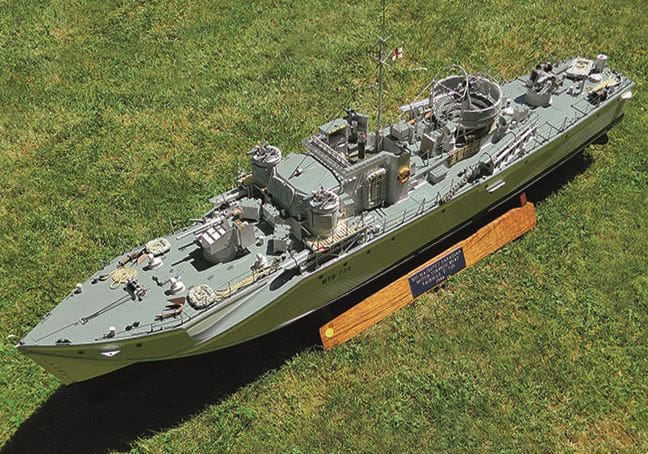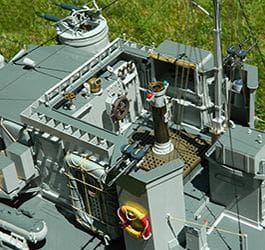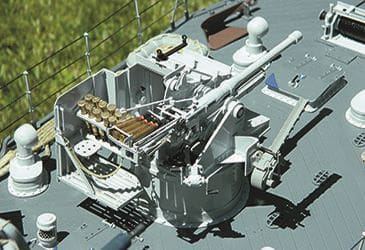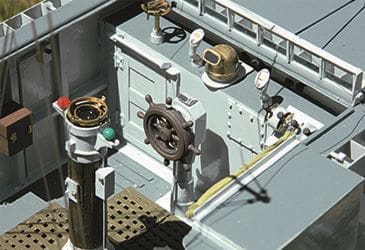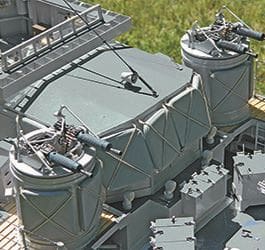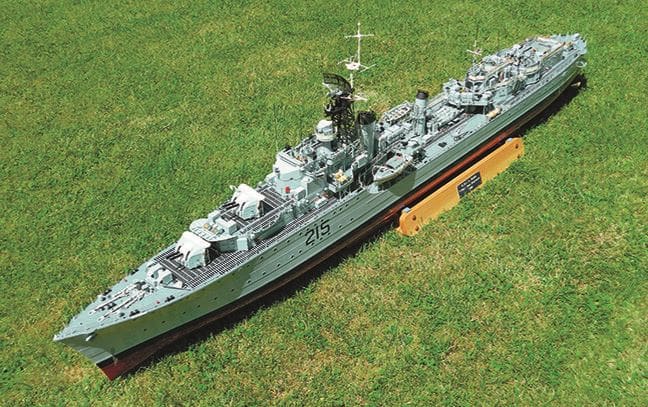
A Canadian from British Columbia, Steve’s first model was a 1:96 scratch-built HMS Exeter, made when he joined the Canadian Army in 1965, aged 18. He retired from military service in 1994 having been in the communications and electronics branch of the service. His interest in warships stems from his being in the Sea Cadets for six years from 1957 to 1963 and spending six weeks aboard HMCS Haida for a training cruise.
At the time of the article Steve had built a total of eight radio controlled models in varying scales, their R/C systems being the older VHF type in all but one, which uses 2.4GHz. The hulls are all of GRP (fibreglass) from his own masters and moulds whilst the decks (or sub-decks) are also of GRP with aluminium reinforcing bars, meaning that the decks and hulls react equally, whether it be hot or cold. Bilge keels, meanwhile, are built around styrene strips set into slots cut into the hulls. The superstructures are all primarily of 1.5mm styrene; stanchions and handrails are of brass rod and thread, and the paints used are Humbrol enamels as well as Tremclad, sprayed or brush applied, this seeming to bond really well to the GRP hulls. (Tremclad is the brand name for a range of paints from the Canadian manufacturer ‘Rust-Oleum’, website: www.rustoleum.ca).
The only, and not very obvious, difference from true scale is that on some models the hull is half an inch deeper than it ought to be, this to improve their stability on the relatively exposed lakes where Steve normally sails.
Enjoy more Model Boats Magazine reading in the monthly magazine.
Click here to subscribe & save.
HMCS Haida
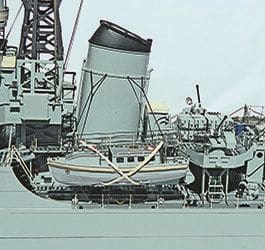
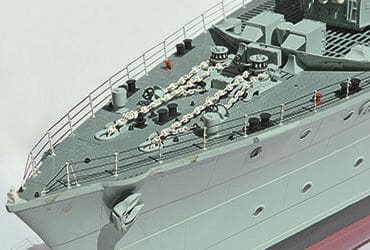
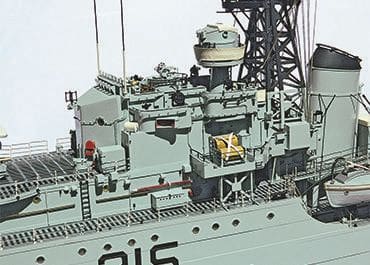
This was a Tribal class destroyer depicted here as she was in 1960. The drawings came from Douglas Monroe of Vanguard Model Marine in Ottawa and ‘Friends of Haida’ provided much of the detail research information required. The Tribal class comprised 27 destroyers built between 1937 and 1943 which saw service with the Royal Navy, Royal Australian Navy and the Royal Canadian Navy. HMCS Haida is the only surviving example of the class and is now a museum ship on the waterfront at Hamilton, Canada. The model was built over a period of 39 months from 2009 to 2012, is to a scale of 1:60 and is 75.4ins (191.5cm) long. Weight is 38lbs (17.2kg) and propulsion is by a single 12V motor geared to the propshafts.
HMCS Nanaimo
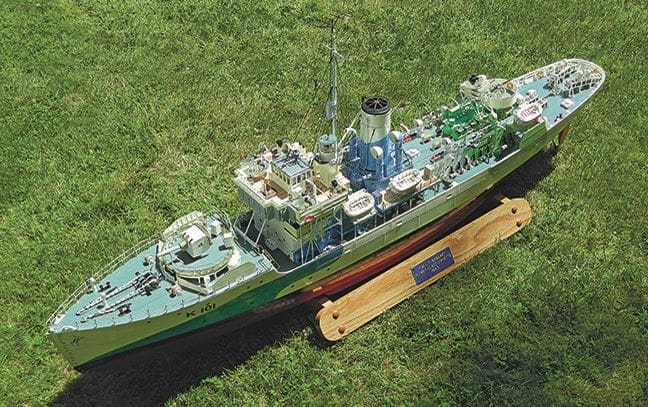
A Flower Class Corvette and one of five built by Yarrow Shipyard at Esquimalt, British Columbia at an estimated cost, in 1941, of $600,000. Although paid-off from military service in 1945, she then served as a whale catcher, being finally scrapped in 1966. The only surviving example of the class is HMCS Sackville that is currently a museum ship at Halifax, Canada. Steve’s model depicts the vessel as in 1943 and is to a scale of 1:48 having a length of 51.2ins (130cm). It’s powered by a single 6V electric motor and has an operating siren from the three channel R/C system.
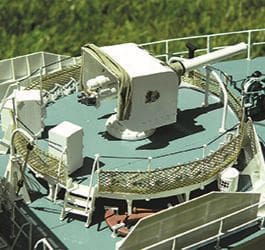
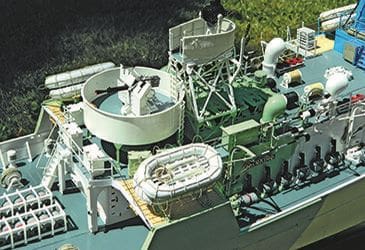
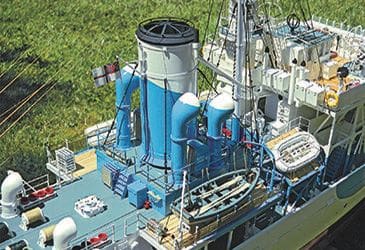
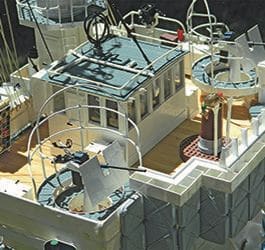
HMCS Ontario
This Swiftsure class light cruiser was laid-down as HMS Minotaur for the Royal Navy, completing in late-1944. During construction she was passed to the RCN and became HMCS Ontario. She served with distinction until 1958 when she was scrapped. The model depicts HMCS Ontario as in July 1945 whilst serving in the Pacific. Original Harland and Wolff plans were used, supported by photographs and recollections from former crew members. The model is to a scale of 1:96 and 69.3ins (176cm) long.
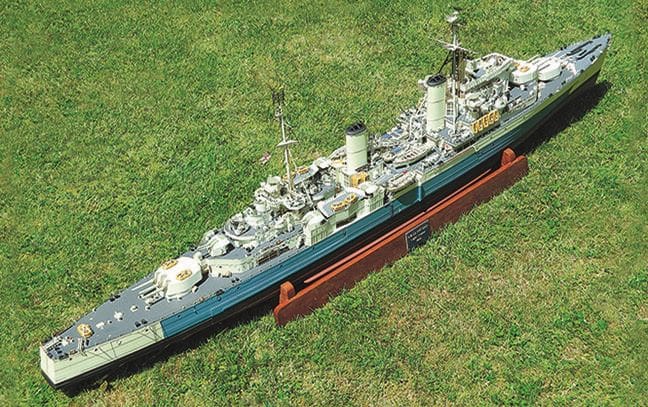
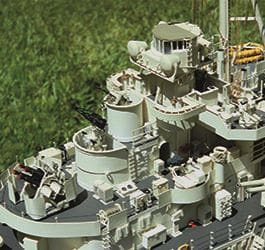
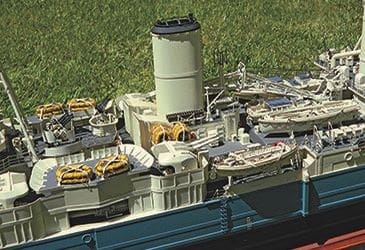
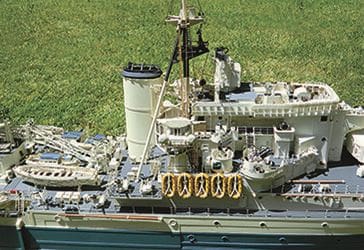
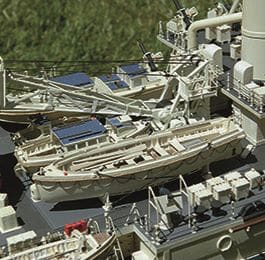
HM Canadian MTB No. 726
This Fairmile D type craft was ordered in 1942 from A. M. Dickie & Sons (Bangor, Wales, UK) and commissioned during March 1944 into the RCN. The boat was returned to the Royal Navy in May 1945. The model is to scale of 1:24 and is 57.5 ins (146cm) long, depicting the craft as in 1944. Propulsion is by a single 12V motor, geared to the propshafts with two channel R/C for the rudder and motor. The hull is of GRP with a ply superstructure that’s aminated externally with styrene sheet. The model took 18 months to build between 2003 and 2005.
